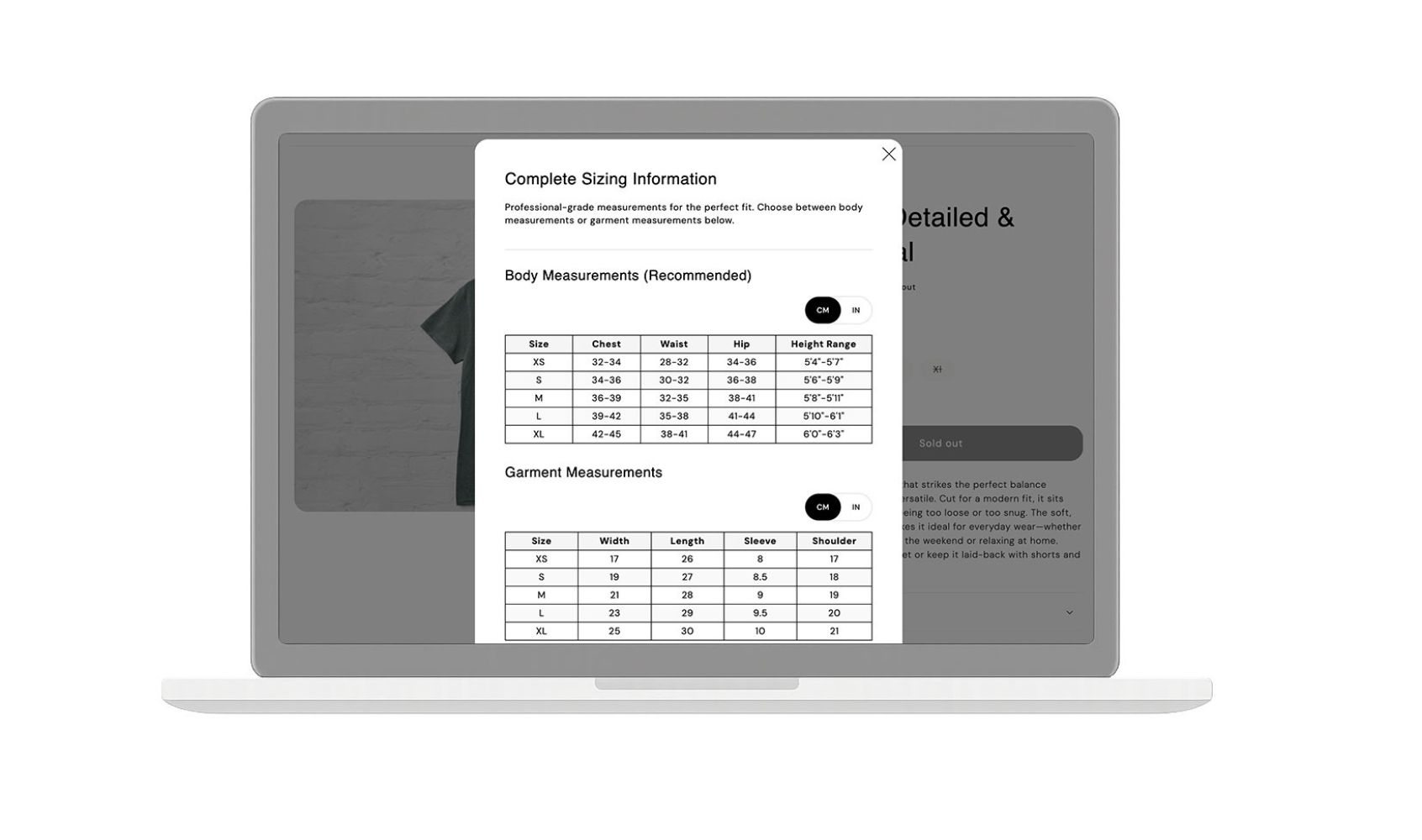Table of Contents
Introduction
Ever ordered something online only to find it doesn't fit when it arrives? You're not alone. Sizing confusion is one of the top reasons for online returns across all product categories.
A clear, well-designed size chart helps shoppers understand exactly how a product will fit, reduces guesswork, and minimizes costly returns. For store owners, accurate size charts build trust, improve customer satisfaction, and can even increase conversion rates.
In this complete guide, we'll break down everything you need to know about size charts: what they are, why they matter for your business, the different types to implement, and common mistakes store owners make. By the end, you'll know how to create and implement effective size charts in your Shopify store.
What Exactly is a Size Chart?
A size chart (also called a sizing guide or fit guide) is a reference table that shows the measurements corresponding to different size labels for clothing, shoes, accessories, or other products. It translates standardized size labels like S, M, L, or numerical sizes like 8, 10, 12 into actual body measurements or product dimensions.
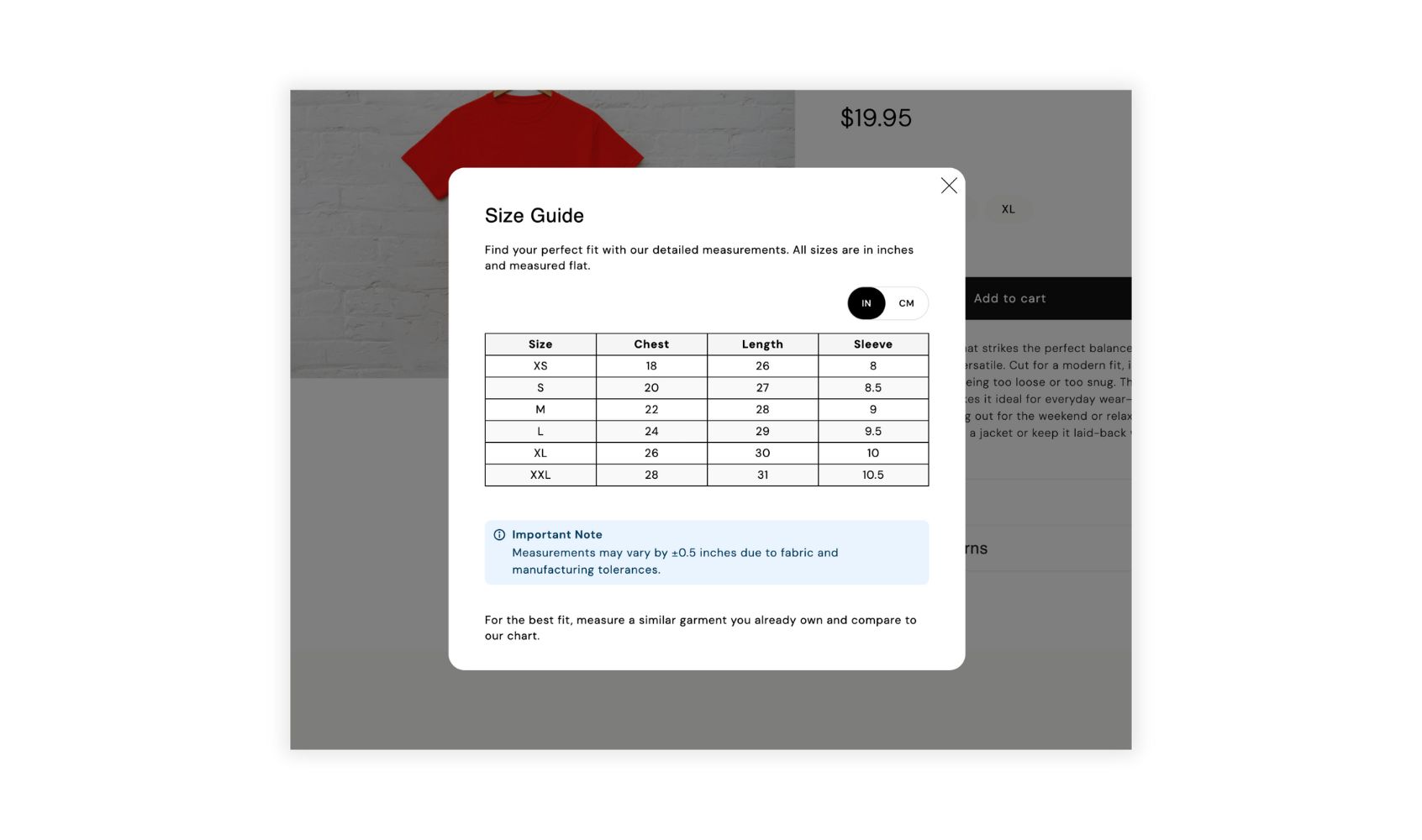
Size charts typically include measurements such as chest circumference, waist size, hip width, inseam length, and other relevant dimensions depending on the product category. They serve as a bridge between your actual body measurements and the sizing system used by a particular brand or retailer.
Unlike standardized sizing (which varies significantly between brands and countries), a size chart provides specific numerical measurements that help eliminate ambiguity. For example, a "Medium" at one brand might fit like a "Large" at another, but if both provide detailed measurements, you can compare them to your own body to determine the best fit.
Why Size Charts Matter
Understanding Your Customers' Needs
Your customers face several challenges when shopping online without size charts:
They lack confidence in purchasing: Without the ability to try items on, shoppers need accurate measurements to make informed decisions. Size charts transform their experience from guesswork into confident purchasing.
They're frustrated by returns: Returns are inconvenient and time-consuming for customers. When they receive items that don't fit, they're less likely to order from you again.
They shop across multiple brands: Your customers aren't loyal to sizing standards. They need your specific measurements to determine if your products will fit their body.
They buy internationally: If you have international customers, they're navigating different sizing systems (for example, US vs. UK vs. EU sizing) and need clear guidance.
The Business Impact for You
Increased customer satisfaction: When customers receive items that fit as expected, they're more likely to become repeat buyers and leave positive reviews.
Higher conversion rates: Clear, detailed size charts reduce purchase anxiety. When shoppers feel confident about sizing, they're more likely to complete their purchase rather than abandon their cart.
Reduced customer service inquiries: Comprehensive size charts answer sizing questions before customers need to contact support, freeing up your team for other tasks.
Competitive advantage: In a crowded marketplace, brands that provide excellent sizing information stand out and build trust with their audience.
Looking for an easy way to add size charts to your Shopify store? Our Shopify size chart app helps you create professional size guides in minutes, with an easy-to-use drag & drop builder. Attach size charts to products, collections, product types and vendors.
Types of Size Charts
Size charts come in various formats depending on the product category, brand preferences, and target audience. Understanding these different types helps you find and use the right information.
Standard Body Measurement Charts
These are the most common type and show how body measurements correspond to size labels. They typically include measurements for bust/chest, waist, hips, and sometimes inseam or sleeve length.
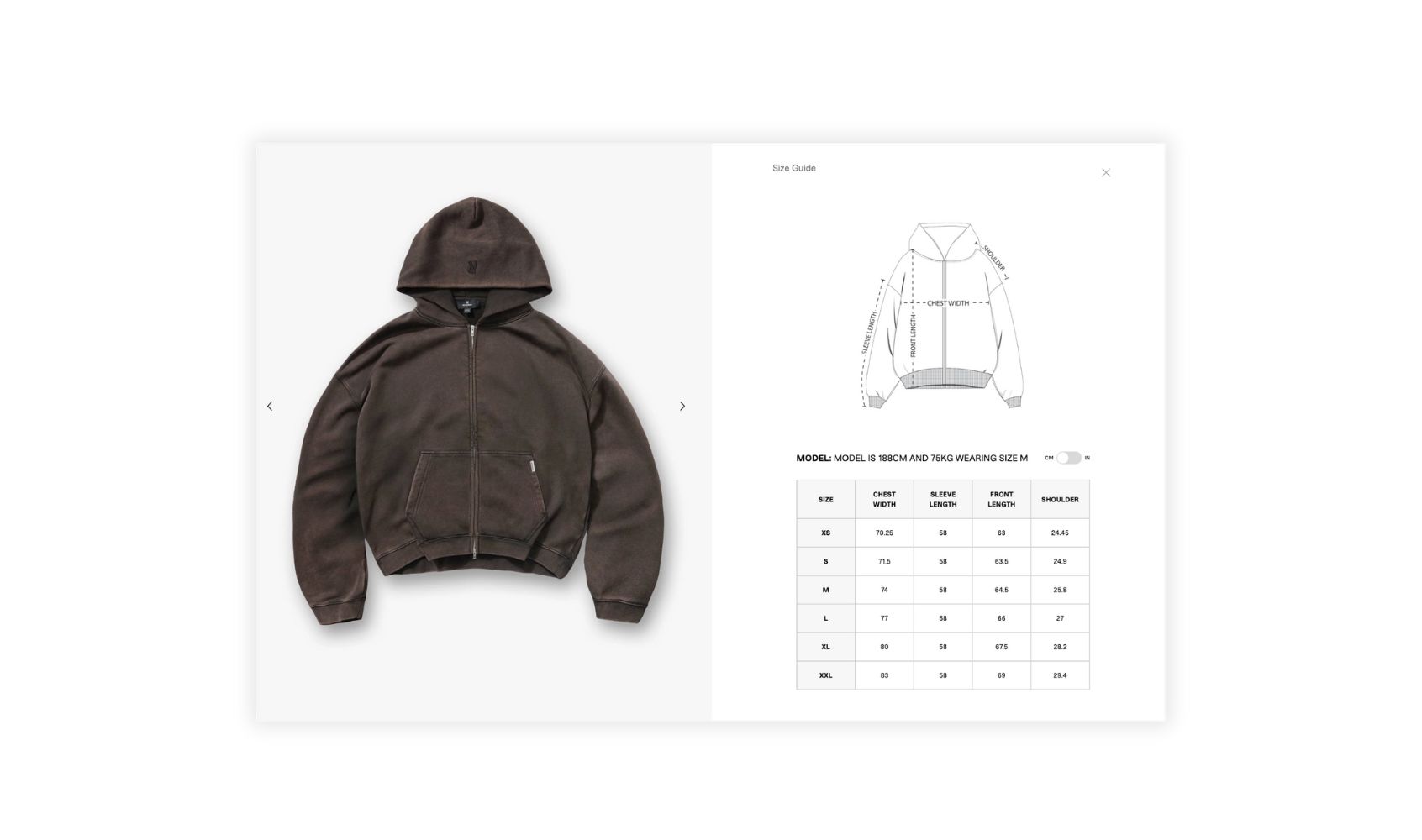
Garment Measurement Charts
Instead of body measurements, these charts show the actual dimensions of the garment itself. This is particularly useful for items where you want to know exactly how long, wide, or roomy a piece will be.
Example: A t-shirt chart might list the chest width (measured flat), length from shoulder to hem, and sleeve length for each size.
Conversion Charts
These translate between different sizing systems, such as US to UK to EU sizes. They're essential for international shopping.
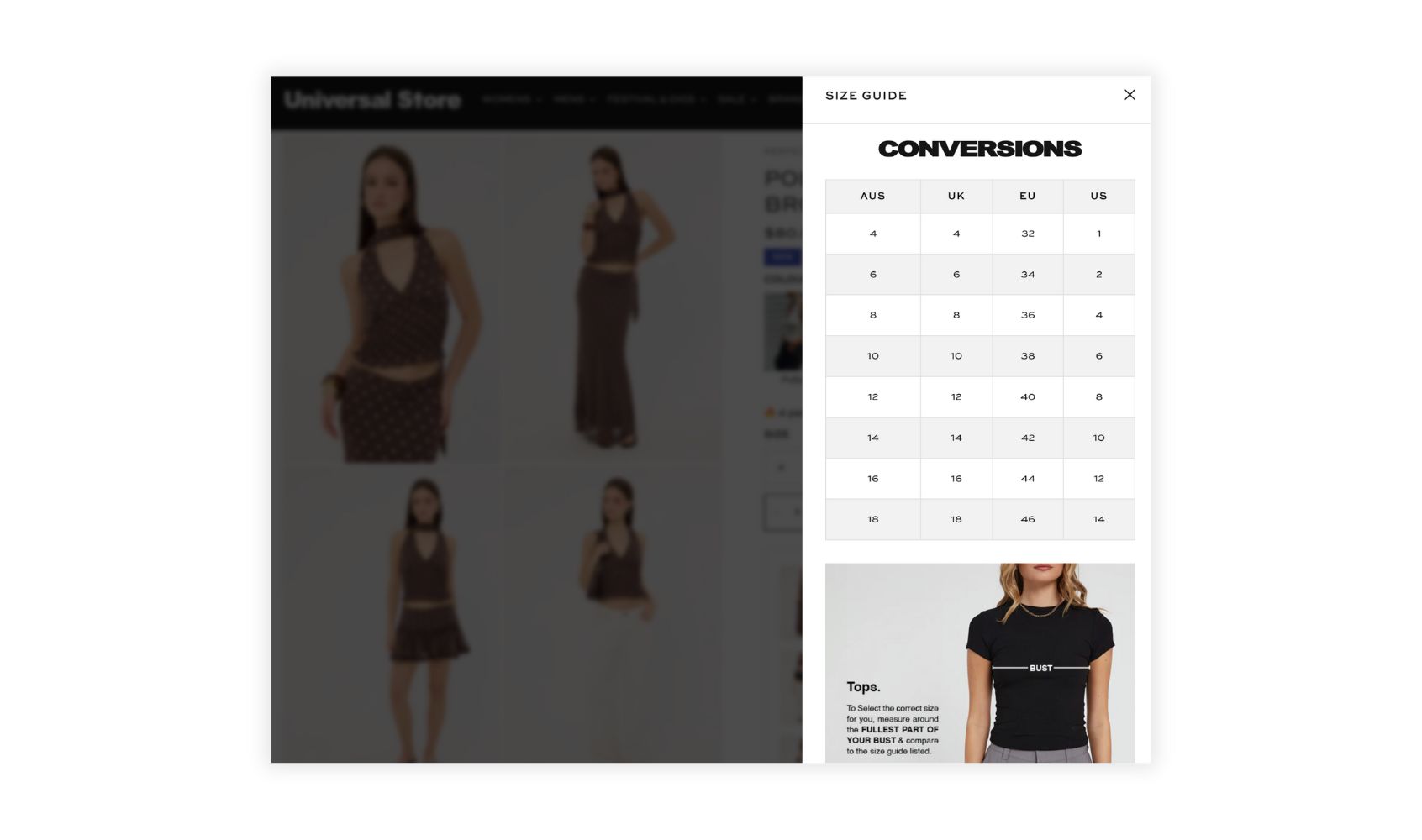
Age-Based Charts
Common for children's clothing, these charts correlate sizes with age ranges and sometimes include height and weight guidelines.
Example: Size 5T typically fits children aged 4-5 years, with heights between 41-44 inches and weights between 38-42 pounds.
Brand-Specific Charts
Some brands create their own unique sizing systems. These charts explain how their proprietary sizes relate to body measurements.
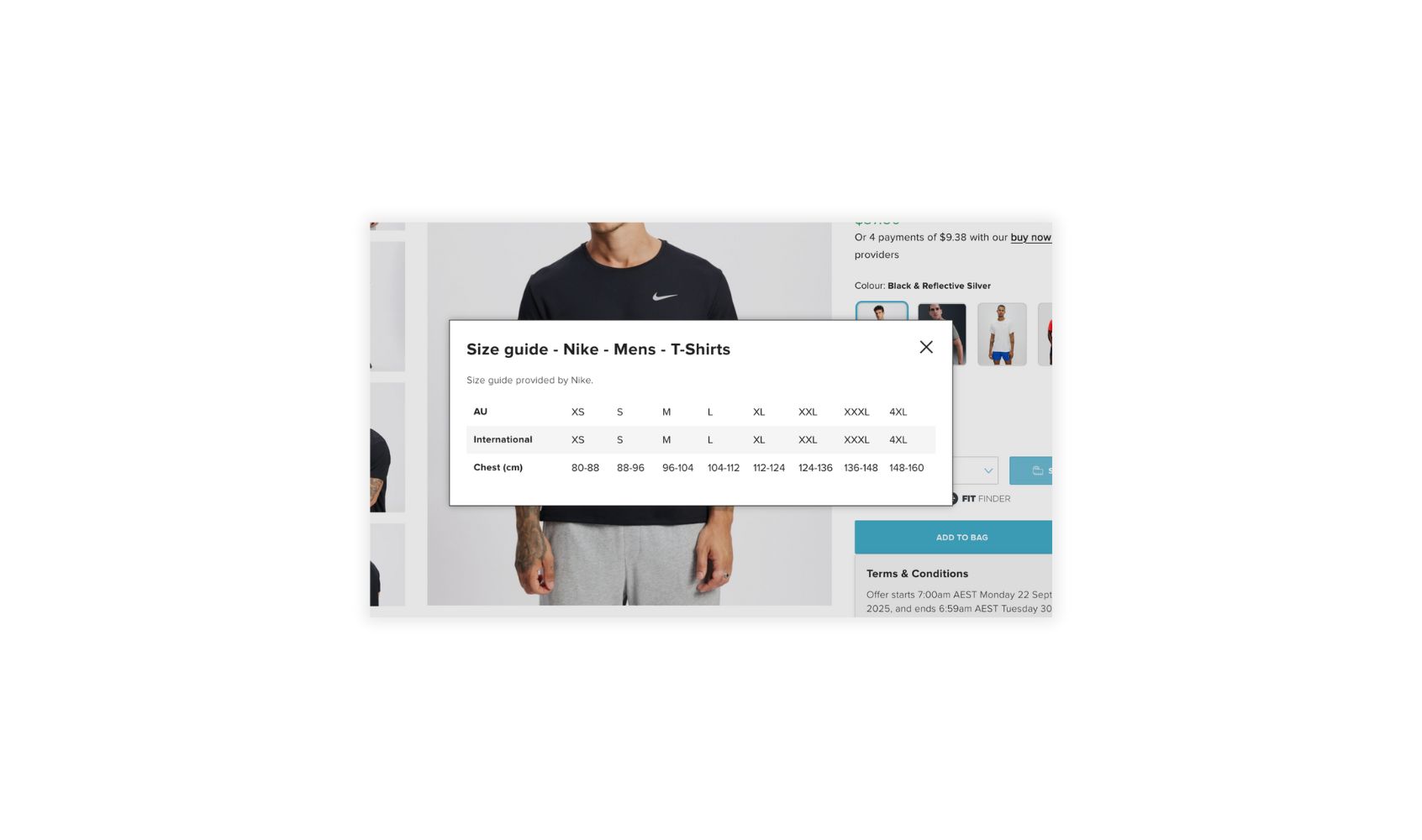
Product-Specific Charts
Certain products require specialized measurements. Ring sizes, hat sizes, bra sizes, and glove sizes each have their own unique charts.
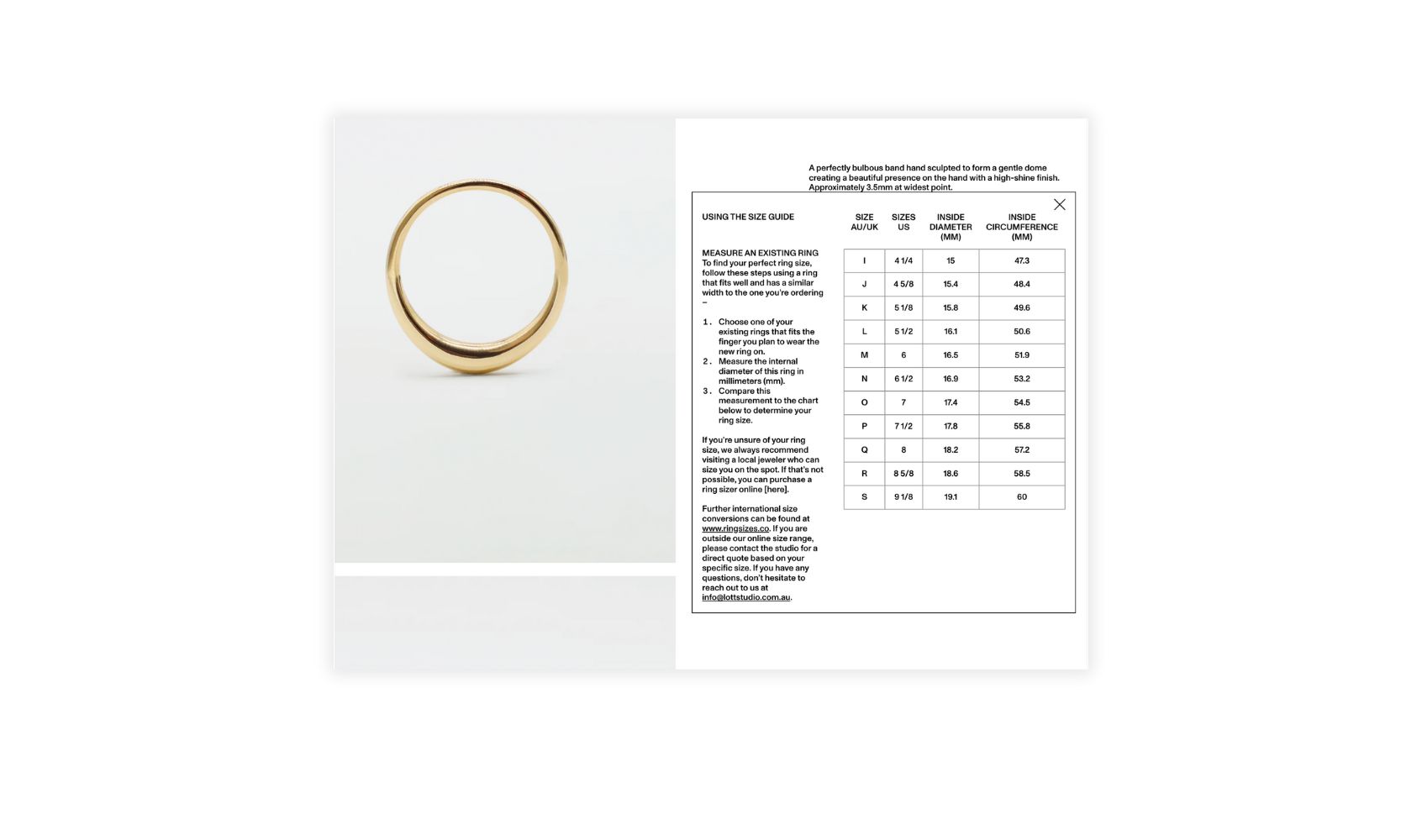
Common Size Chart Mistakes
Size chart mistakes cost you sales and increase returns. Here are the most common errors store owners make and how to avoid them.
Using generic size charts: Every brand fits differently. Generic charts don't reflect your actual products and will lead to poor fit and returns.
Inconsistent measurements across products: Each product should have its own accurate measurements. Copying and pasting the same chart for different items creates problems.
Not providing enough detail: A chart with only three measurements (S, M, L) isn't sufficient. Include multiple body measurements and, ideally, garment measurements too.
Mixing measurement systems: Switching between inches and centimeters within the same chart causes confusion. Stick to one system (or provide both clearly labeled).
Forgetting to update charts: If you change manufacturers or adjust your sizing, update your charts immediately. Outdated information damages trust.
Poor chart placement: Size charts should be easy to find on product pages. Don't bury them at the bottom or in hard to reach locations on the page.
No guidance for between sizes: Provide clear recommendations for customers whose measurements fall between sizes. This reduces hesitation and cart abandonment.
Missing fit notes: Terms like "runs small," "generous fit," or "true to size" help customers adjust their expectations and choices.
Avoid these mistakes with a dedicated solution: Using a Shopify size chart app ensures consistency, makes updates easy, and provides professional-looking charts that build customer trust.
Summary
Size charts are essential tools that bridge the gap between standardized sizing labels and actual body measurements. For online store owners, they're critical for reducing returns, building customer trust, and increasing conversions.
For Shopify store owners, investing in accurate, detailed, and accessible size charts pays dividends through reduced returns, increased customer satisfaction, and higher conversion rates."
Ready to add professional size charts to your Shopify store? Our Shopify size guides app makes it easy to create, customize, and display size guides that reduce returns and boost customer confidence."
